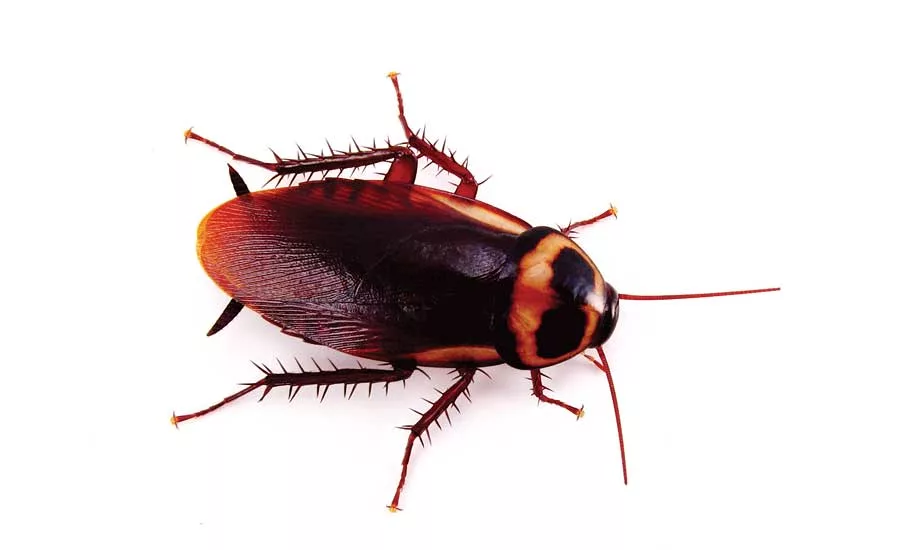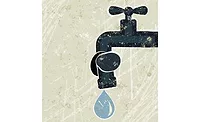Drain maintenance helps prevent cockroach infestations
The restroom is being taken over by fearless cockroaches, and their entry point is the floor drain.

Let’s start out with a scenario: A building manager calls you, a local plumber, with a problem regarding one of the building’s restroom floor drains. No, the pipe is not clogged, and the drain cover is firmly attached, so nothing has fallen down the drain.
The problem is what is coming out of the drain. The restroom is being taken over by fearless cockroaches, and their entry point is the floor drain.
For many, even plumbing professionals, how this happens is a bit of a mystery. So, let’s try to unravel it. We know sewers provide a favorable environment for all kinds of pests, including cockroaches. Sewers tend to be warm and moist with food aplenty — if you are a cockroach, that is.
What often happens is they can find their way into the pipes — those dry and no longer in use as well as those still in use — and once this happens, it’s just a hop, skip and a jump inside a home, office, school or virtually any facility. And while floor drains are a key entry point in commercial facilities, in residential settings, bathtubs and showers tend to be the main entries.
It’s pretty clear how cockroaches can maneuver their way unimpeded when drains and pipes are dry and not in use. And if the water traps (also known as sink traps) under the drain have dried out as well, even if temporarily, this is a perfect time for cockroaches to march into the building.
But even if traps have not dried out and water is being released in the drain, some varieties of cockroaches can swim underwater, holding their breath for about 30 minutes. In such cases, they may be able to swim their way out of the drain, looking for a new dry home such as in a building’s restroom.
We should also add that while many cockroaches in a facility started out in the sewers, some may already be inside a facility and are attracted to the moisture from sweating pipes in the building. When this happens, they follow the same route as those coming from the sewer: They look for an opening, get inside the pipe, swim if and when necessary, and then march out of the drain.
Types of Cockroaches
While what is called the “German cockroach” is the most common cockroach in the U.S., others we might encounter include oriental cockroaches, smoky-brown cockroaches, brown-banded cockroaches and American cockroaches.
There are about 3,500 different types of cockroaches in the world with nearly 70 types present in the U.S.
Easy solutions
Let’s go back to our original scenario. You’ve been called in to help this building manager with his or her floor-drain cockroach invasion. One of the first and least costly steps to take is to just place fitted, wire mesh coverings over the floor drains. However, a concern with this solution is that the wire mesh can clog, so these should frequently be replaced.
We don’t have to worry about placing the wire mesh, however, around any gaps between walls and building pipes. Caulk or seal these areas first and then apply the wire mesh over the area.
You should also encourage the customer to have the drains cleaned frequently. Depending on where it is located, grease, food scraps, soap and other soils can build up in floor drains. Cockroaches are attracted to these contaminants and removing them makes the waste less attractive to these bugs.
Where are they coming from?
It may not always be clear where or how cockroaches are finding their way into a facility. Entering through drain pipes is one way, but there are many others.
If plumbing professionals are asked to investigate the problem, one option is to apply glue traps around pipes, in basements, under sinks and drains, etc. If cockroaches stick to the placed adhesives, it means a larger population is nearby. This provides a pretty good idea of where they are located and how they are entering the facility.
Sources: PestWorld.org
Preventing water traps from drying out
Making sure water traps continue to work properly is still one of the best ways to prevent cockroach invasions through the floor and other types of drains. This is true even though, as mentioned previously, some cockroaches can swim and hold their breath for 30 minutes. The water acts as a wall. It can successfully block many types of cockroaches so that only the bravest and the most adventuresome try their luck.
There are two ways to make sure the traps continue to work properly and provide this “wall.”
Trap primer: In most cases, a trap primer is connected to a water supply that detects when trap water has evaporated and releases small amounts of water into the drain to refill the trap. Some work with sensors; others work with timers. In most cases, plumbers will need to be called in to install these devices for their clients.
Liquid trap seal primer: Another option, which is far less costly for the customer, is to pour a liquid sealer or primer down the drain. These products, often referred to as “ever prime” are available to plumbing professionals.
These primers are relatively long lasting — three to six months or longer. Be sure to select liquid primers that are odorless and biodegradable. They are frequently the “solution of choice” for schools because they are so inexpensive and because many schools are closed for extended periods of time. This is when their water traps most frequently dry out.
Another benefit of using either a mechanical trap primer or a liquid primer is that they prevent odors from being released into restrooms and other areas of a facility.
Cockroach infestations and odors are a combination no one wants. Fortunately, plumbing professionals can now take steps to help prevent these problems from occurring.
Looking for a reprint of this article?
From high-res PDFs to custom plaques, order your copy today!







